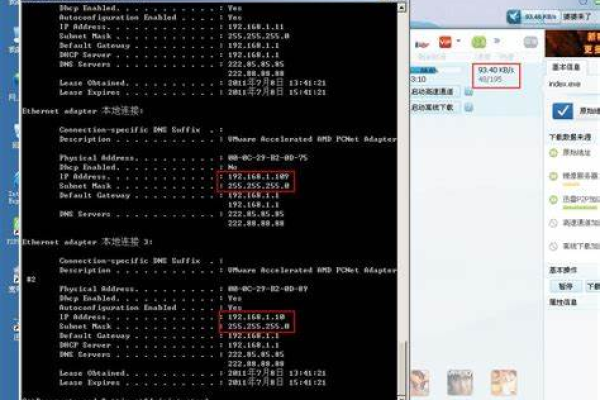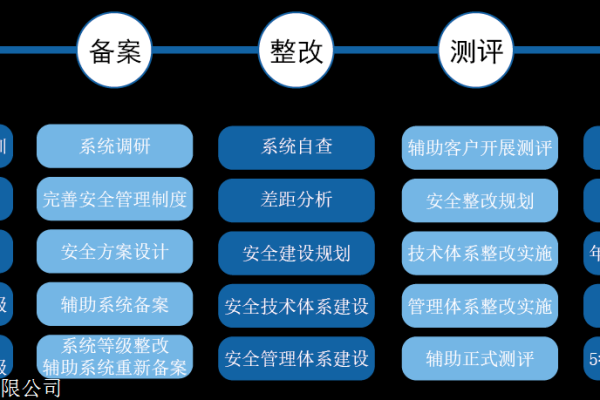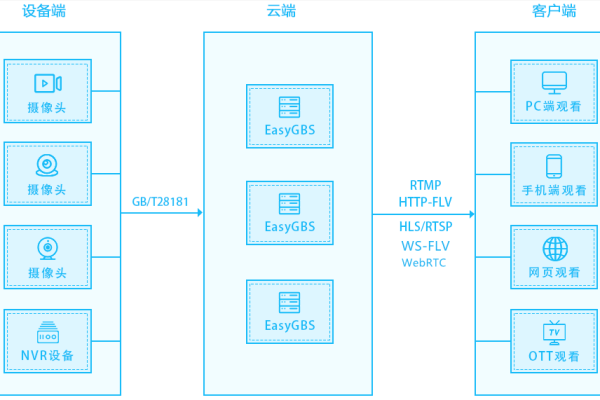如何检测操作系统是否为虚拟机?
- 行业动态
- 2025-03-08
- 16
dmidecode 命令查看 BIOS 信息,或检查 CPU 特定的指令集。
在C语言中,检测系统是否运行在虚拟机上可以通过多种方法实现,以下是一些常用的技术手段和示例代码:
一、硬件特征差异检测
1、查看BIOS信息
原理:虚拟机的BIOS信息通常与真实硬件的BIOS信息不同,通过特定的命令可以查看BIOS信息,若其中包含虚拟机相关的标识,则可判断为虚拟机。
示例代码:
#include <stdio.h>
#include <stdlib.h>
int main() {
system("dmidecode -t bios > bios_info.txt");
FILE file = fopen("bios_info.txt", "r");
if (file == NULL) {
perror("Failed to open file");
return 1;
}
char buffer[256];
while (fgets(buffer, sizeof(buffer), file)) {
if (strstr(buffer, "VirtualBox") || strstr(buffer, "VMware")) {
printf("This is a virtual machine.
");
fclose(file);
return 0;
}
}
printf("This is not a virtual machine.
");
fclose(file);
return 0;
}
上述代码使用system函数调用dmidecode命令获取BIOS信息并保存到文件,然后读取文件内容,查找是否包含“VirtualBox”或“VMware”等关键字来判断是否为虚拟机。
2、检查CPU特征
原理:虚拟机的CPU特征可能与真实硬件不同,通过读取CPU信息并查找特定字段,如“hypervisor”,可以判断系统是否运行在虚拟机上。
示例代码:
#include <stdio.h>
#include <stdlib.h>
int main() {
FILE file = fopen("/proc/cpuinfo", "r");
if (file == NULL) {
perror("Failed to open file");
return 1;
}
char buffer[256];
int hypervisor_found = 0;
while (fgets(buffer, sizeof(buffer), file)) {
if (strstr(buffer, "hypervisor")) {
hypervisor_found = 1;
break;
}
}
fclose(file);
if (hypervisor_found) {
printf("This system is running on a virtual machine.
");
} else {
printf("This system is not running on a virtual machine.
");
}
return 0;
}
该代码打开/proc/cpuinfo文件,逐行读取内容并查找“hypervisor”字段,如果找到则表示系统运行在虚拟机上。
二、文件系统异常检测
1、检查特定文件和目录
原理:虚拟机通常会在文件系统中创建特定的文件和目录,例如VMware可能会创建/etc/vmware-tools目录,通过检查这些文件和目录的存在与否,可以识别虚拟机。
示例代码:

#include <stdio.h>
#include <sys/stat.h>
int main() {
struct stat statbuf;
if (stat("/etc/vmware-tools", &statbuf) == 0) {
printf("This is a VMware virtual machine.
");
} else {
printf("This is not a VMware virtual machine.
");
}
return 0;
}
上述代码使用stat函数检查/etc/vmware-tools目录是否存在,如果存在则认为是VMware虚拟机。
2、检查系统日志
原理:虚拟机启动和运行时,会在系统日志中留下特定的记录,通过查看系统日志并查找与虚拟机相关的信息,可以确定系统是否为虚拟机。
示例代码:
#include <stdio.h>
#include <stdlib.h>
int main() {
system("dmesg > dmesg_output.txt");
FILE file = fopen("dmesg_output.txt", "r");
if (file == NULL) {
perror("Failed to open file");
return 1;
}
char buffer[256];
int vm_found = 0;
while (fgets(buffer, sizeof(buffer), file)) {
if (strstr(buffer, "virtual") || strstr(buffer, "vm")) {
vm_found = 1;
break;
}
}
fclose(file);
if (vm_found) {
printf("This is a virtual machine.
");
} else {
printf("This is not a virtual machine.
");
}
return 0;
}
此代码使用system函数调用dmesg命令获取系统日志并保存到文件,然后读取文件内容,查找是否包含“virtual”或“vm”等关键字来判断是否为虚拟机。
三、系统性能表现检测
1、系统资源利用率
原理:虚拟机的系统资源利用率通常高于物理机,因为虚拟机需要分配额外的资源用于虚拟化开销,通过查看系统资源利用率,如CPU、内存等的使用情况,可以初步判断是否为虚拟机。
示例代码:
#include <stdio.h>
#include <stdlib.h>
int main() {
system("top -b -n 1 | grep 'Cpu(s)' > top_output.txt");
FILE file = fopen("top_output.txt", "r");
if (file == NULL) {
perror("Failed to open file");
return 1;
}
char buffer[256];
if (fgets(buffer, sizeof(buffer), file)) {
double idle = atof(strtok(buffer, ","));
if (idle < 80.0) { // 假设物理机的空闲CPU利用率一般较高,这里以80%为例
printf("This might be a virtual machine. High CPU usage detected.
");
} else {
printf("This is likely a physical machine. Low CPU usage detected.
");
}
} else {
printf("Failed to read CPU usage.
");
}
fclose(file);
return 0;
}
上述代码使用top命令获取系统的CPU使用率并保存到文件,然后读取文件中的空闲CPU利用率,如果空闲利用率较低,则可能是虚拟机。
2、网络性能
原理:虚拟机的网络性能通常不如物理机,通过测试网络延迟、带宽等指标,可以与物理机的性能进行对比,从而判断是否为虚拟机。
示例代码:
#include <stdio.h>
#include <stdlib.h>
#include <sys/time.h>
#include <netinet/in.h>
#include <arpa/inet.h>
#include <unistd.h>
long get_ping_time(const char hostname) {
struct timeval start, end;
struct sockaddr_in serv_addr;
int sockfd = socket(AF_INET, SOCK_DGRAM, IPPROTO_ICMP);
serv_addr.sin_family = AF_INET;
serv_addr.sin_addr.s_addr = inet_addr(hostname);
gettimeofday(&start, NULL);
sendto(sockfd, "Hello", 5, 0, (struct sockaddr )&serv_addr, sizeof(serv_addr));
recvfrom(sockfd, NULL, 0, 0, NULL, NULL);
gettimeofday(&end, NULL);
return (end.tv_sec start.tv_sec) 1000 + (end.tv_usec start.tv_usec) / 1000;
}
int main() {
long ping_time = get_ping_time("8.8.8.8"); // 以Google的公共DNS服务器为例
if (ping_time > 50) { // 假设物理机ping时间一般小于50ms,这里以50ms为例
printf("This might be a virtual machine. High network latency detected.
");
} else {
printf("This is likely a physical machine. Low network latency detected.
");
}
return 0;
}
该代码实现了一个简单的ping功能,计算与目标主机(这里以Google的公共DNS服务器8.8.8.8为例)之间的往返时间,如果ping时间较长,则可能是虚拟机。

四、特定虚拟机文件和服务检测
1、检查服务
原理:虚拟机通常会运行特定的服务,例如VMware虚拟机可能会运行“vmtoolsd”服务,通过检查这些服务的运行状态,可以判断系统是否为虚拟机。
示例代码:
#include <stdio.h>
#include <stdlib.h>
int main() {
system("systemctl status vmtoolsd > service_status.txt");
FILE file = fopen("service_status.txt", "r");
if (file == NULL) {
perror("Failed to open file");
return 1;
}
char buffer[256];
if (fgets(buffer, sizeof(buffer), file)) {
if (strstr(buffer, "active (running)")) {
printf("This is a VMware virtual machine. vmtoolsd service is running.
");
} else {
printf("This is not a VMware virtual machine or vmtoolsd service is not running.
");
}
} else {
printf("Failed to read service status.
");
}
fclose(file);
return 0;
}
上述代码使用system函数调用systemctl status vmtoolsd命令检查“vmtoolsd”服务的运行状态,并根据输出判断是否为VMware虚拟机。
2、检查模块
原理:虚拟机通常会加载特定的内核模块,例如VirtualBox虚拟机可能会加载“vboxguest”模块,通过检查加载的内核模块,可以识别虚拟机。
示例代码:
#include <stdio.h>
#include <stdlib.h>
int main() {
system("lsmod | grep vboxguest > module_list.txt");
FILE file = fopen("module_list.txt", "r");
if (file == NULL) {
perror("Failed to open file");
return 1;
}
char buffer[256];
if (fgets(buffer, sizeof(buffer), file)) {
if (strstr(buffer, "vboxguest")) {
printf("This is a VirtualBox virtual machine. vboxguest module is loaded.
");
} else {
printf("This is not a VirtualBox virtual machine or vboxguest module is not loaded.
");
}
} else {
printf("Failed to read module list.
");
}
fclose(file);
return 0;
}
该代码使用system函数调用lsmod命令并结合grep过滤出与“vboxguest”相关的模块信息,然后根据输出判断是否为VirtualBox虚拟机。
五、虚拟机检测工具使用(以Virt-what为例)
原理:Virt-what是一个专门用于检测虚拟化环境的工具,它通过多种方式综合判断系统是否运行在虚拟机上,并输出检测结果。
示例代码:
#include <stdio.h>
#include <stdlib.h>
int main() {
system("sudo apt-get install virt-what -y"); // 确保安装了virt-what工具,此步骤可能需要管理员权限,实际使用时需谨慎操作或提前安装好工具
system("virt-what > virt_what_output.txt"); // 运行virt-what命令并将结果保存到文件
FILE file = fopen("virt_what_output.txt", "r");
if (file == NULL) {
perror("Failed to open file");
return 1;
}
char buffer[256];
if (fgets(buffer, sizeof(buffer), file)) {
if (strstr(buffer, "KVM") || strstr(buffer, "Xen") || strstr(buffer, "VMware") || strstr(buffer, "VirtualBox")) { // 根据常见的虚拟机类型关键字判断是否为虚拟机
printf("This is a virtual machine. Virt-what detected: %s", buffer);
} else {
printf("This is not a virtual machine. Virt-what output: %s", buffer);
}
} else {
printf("Failed to read Virt-what output.
");
}
fclose(file);
return 0;
}












